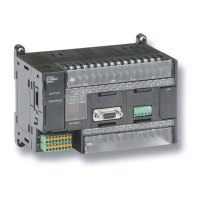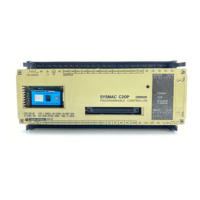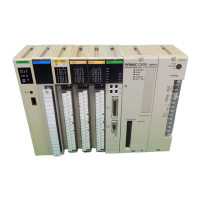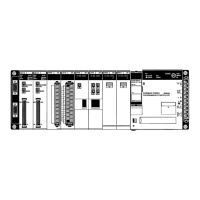610
Floating-point Math Instructions Section 3-15
Description RAD(458) converts the 32-bit floating-point number in S+1 and S from
degrees to radians and places the result in R and R+1. (The floating point
source data must be in IEEE754 format.)
Degrees are converted to radians by means of the following formula:
Degrees
× π/180 = radians
If the absolute value of the result is greater than the maximum value that can
be expressed as floating-point data, the Overflow Flag will turn ON and the
result will be output as
±∞.
If the absolute value of the result is less than the minimum value that can be
expressed as floating-point data, the Underflow Flag will turn ON and the
result will be output as 0.
Flags
Precautions The source data in S+1 and S must be in IEEE754 floating-point data format.
3-15-10RADIANS TO DEGREES: DEG(459)
Purpose Converts a 32-bit floating-point number from radians to degrees and places
the result in the specified result words.
Ladder Symbol
Variations
Applicable Program Areas
R+1 R
S
S+1
Source (degrees, 32-bit floating-point data)
Result (radians, 32-bit floating-point data)
Name Label Operation
Error Flag ER ON if the source data is not recognized as floating-point
data.
ON if the source data is not a number (NaN).
OFF in all other cases.
Equals Flag = ON if both the exponent and mantissa of the result are 0.
OFF in all other cases.
Overflow Flag OF ON if the absolute value of the result is too large to be
expressed as a 32-bit floating-point value.
Underflow Flag UF ON if the absolute value of the result is too small to be
expressed as a 32-bit floating-point value.
Negative Flag N ON if the result is negative.
OFF in all other cases.
DEG(459)
S
R
S: First source word
R: First result word
Variations Executed Each Cycle for ON Condition DEG(459)
Executed Once for Upward Differentiation @DEG(459)
Executed Once for Downward Differentiation Not supported.
Immediate Refreshing Specification Not supported.
Block program areas Step program areas Subroutines Interrupt tasks
OK OK OK OK
